- August 13, 2024
- Posted by: Matt Kreuz
- Category: News & Articles
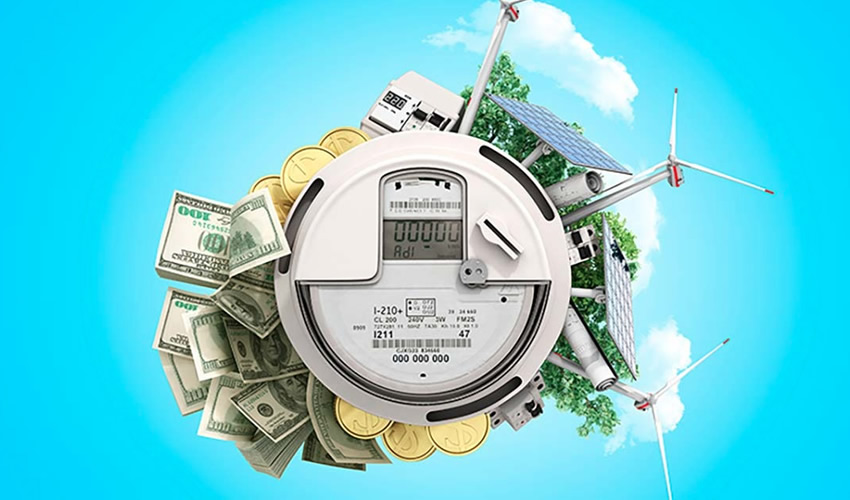
The urgency of the issue at hand is undeniable. If electric rates remained at their current kilowatt-hour cost, the need to transition to solar energy wouldn’t be as pressing. However, the reality is that these rates are not just projected but inevitably set to surge, not by a small margin, but significantly. The current rates are not sustainable and are set to double and then double again over the next five and ten years. This drastic increase is inevitable to cover NV Energy’s upcoming expenses.
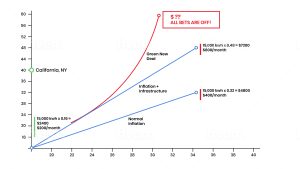
So, how do I know this? What’s coming? The government is making it clear with its policies. It’s not a secret; it’s a fact. Here are the four key factors:
- Unprecedented inflation
- The Inflation Reduction Act and The Paris Climate Accord (AKA “The Green New Deal”)
- Infrastructure investments required for AI data centers
- Infrastructure investments required for EV charging
Let’s break these down one at a time.
Unprecedented Inflation
How much does solar cost? In most markets, including southern Nevada, solar energy is cheaper than electricity from your utility company. This could mean a monthly saving of $30 to $100, which could finance a $30,000 to $60,000 solar energy system. However, the real reason to go solar is not just these savings but its significant role in combating inflation and the unprecedented rising costs of goods and services. By choosing solar, you’re saving money and taking control of your financial future.
Unless you’re my age, you’ve never experienced the inflation we’ve endured over the past four years. I’m old enough to remember when Jimmy Carter was president. I was in high school and starting college. The nation dealt with 7% inflation, 21% interest rates, and surging energy costs. When I got my driver’s license at 16, gas was 38 cents a gallon. By the end of the Carter administration in 1981, it was $1.20, more than three times as much. Ronald Regan was elected in a landslide to change many things, but more than anything, to fix the economy and reduce inflation. Since then, inflation has been in the 2%- 4% range. This historical context of surging energy costs should make us all the more determined to make a change. It’s a change that not only saves us money but also helps us combat the effects of inflation.
25-year electricity cost projections assume the historical rate of inflation. When you look at the historical prices for kilowatt-hours, they have doubled every 15 years since the 1960s, when electricity cost about 2 ½ cents per kilowatt-hour. Those prices have reliably doubled approximately every 15 years to get us to our current prices. Eliminating the doubling of your electric costs over the next 15 years is a highly compelling reason to go solar. If you can avoid increasing your residential energy costs from $3,000 to $6,000 a year over the next 15 years and do it without spending more money, in fact, paying less every month for solar, it doesn’t make sense not to do this.
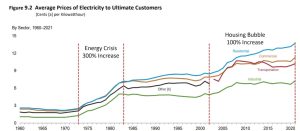
You can get on the Internet and go down the “rabbit hole” of how Inflation rates are calculated. I have. I threw my hands up when I got to the part where they didn’t include food and energy prices. What’s the point?
As far as I’m concerned, inflation is a tax. It’s the price we pay for having a big, fat, bloated government that prints (actually, they now call it “creating digital currency”) and spends exorbitant amounts of money, thereby devaluing our money.
The United States is still dealing with the $10 trillion of COVID-19 stimulus payments that were spent to make the pandemic lockdown seem like a vacation.
$10 trillion? When I was a kid, a million dollars was an unfathomable amount. But then, we talked in terms of billions of dollars. Now it’s trillions of dollars. Our politicians talk about it as if it were change to be stepped over in the street. It’s not. It is an unfathomable amount of money. If I were to count to one million, one number a second, it would take me 11 ½ days. A billion? About 31 years. It would take me 31,000 years to count to a trillion!
So, if the current inflation rate is 3.7%, why is the cost of food, gas, and energy so high? Because of their volatility, they are not factored into the inflation rate. If we use the same model to calculate the Consumer Price Index (CPI) used in the 70s, the current inflation rate would be reported as 15%. They’re not telling us this, are they?
Do you think NV Energy will absorb these inflationary costs without passing them on to the consumers? No. You get to pay more for electricity, just like you get to pay more for eggs.
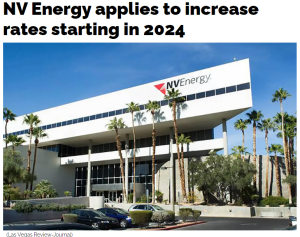
A homeowner should go solar to remove inflation from the equation. You can fix the cost of your home’s energy usage over 25 years or more without increasing expenditures by one dollar. You can put solar on your home without taking a single dollar out of the bank and provide power for your family for a lower monthly payment than you are currently paying.
The Inflation Recovery Act and the Paris Climate Accord, AKA “The Green New Deal”
In January 2021, we re-entered the Paris Climate Accord, committing the United States to reduce carbon emissions by about 50% by 2030. This will require utility companies to retrofit their power plants with technology to capture, liquify, and dispose of carbon emissions. Guess who gets to pay for that.
The Inflation Reduction Act (IRA) is a legislative initiative to combat climate change and reduce carbon emissions. Enacted in August 2022, this radical legislation allocates $369 billion towards climate solutions and environmental justice, making it the largest climate investment in U.S. history.
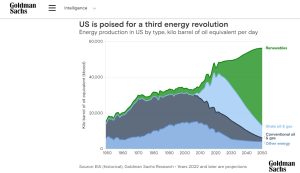
Where does the government get all this money? We are $33 trillion in debt. Not only do we not have the money, but our credit cards are maxed out, and we keep increasing the balance. It was just raised again—until September. Seriously? Are we going to get another trillion dollars in debt every month or two?
Who’s paying for all this? We are—you, me, and everyone who pays taxes.
We are going to pay 30% of everyone’s solar. It doesn’t have an amount.
The Inflation Recover Act was initially estimated to cost taxpayers about $400 billion. A year and a half later, the Congressional Budget Committee “rescored” it at $1.2 trillion! That’s 300% of what we were sold. You mean to tell me you signed me up to pay my portion of $400 billion, and a year and a half later, it’s $1.2 trillion? Why? If I weren’t a solar guy, I’d be pissed.
By the way, it’s Mark Zuckerberg’s fault. Billionaires like Zuckerberg jumped at the opportunity to earn all that free money. He was planning on getting a Green Star for installing one gigawatt of solar energy to power his Metaverse.
However, once he found out he was getting a 30% tax credit, plus a tax write-off, another 30% in depreciation, and all the other government incentives, that it was going to be 80% free, he revised his idea of how much solar he should buy from 1 gigawatt to 10 gigawatts. I’m sure that will sound great at cocktail parties, “I have 100% green energy powering the Metaverse.”
And guess who gets to pay for it? That’s right. You do. I do. We’re paying for 80% of it. And the other 20%? He would have had to pay five to ten times that amount. He’s paying nothing.
Mark Zuckerberg is not a stupid man. If you told him, “This much is free, you’ll spend the money anyway.” Mark would say, “Done. Why are we still talking about it? Just do it.”
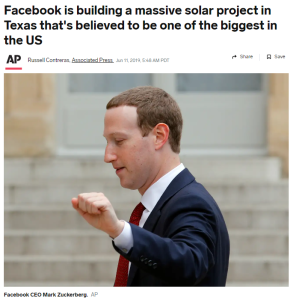
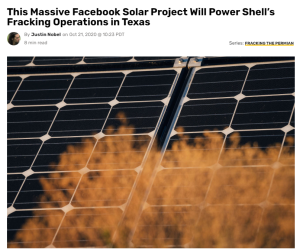
That is how we go from $400 billion to $1.2 trillion. It sure as heck isn’t because homeowners said, “Holy crap! We need to sign up for solar! Where’s the line?” The line is full of billionaires.
While the billionaires are lining up to take advantage of all this “free money,” what are homeowners saying? “Well, I don’t know; it’s a lot of money. The interest rates are high. I might sell my house someday. I’m just going to hold off for now. Maybe in a couple of years.”
Sorry, it’ll be a couple of years too late.
They’ve told us hydrocarbon fuels will disappear forever, and raising rates is the only way they can make that happen.
Let’s say you’re currently paying NV Energy $2,400 a year. Over the next five years, that will be $4,800 a year, which will have worked up to $9,600 a year in another five years. Your energy bill will be double what your mortgage is.
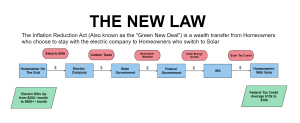
That’s how they get us to do what they want. They make what we’re doing unaffordable.
I grew up in the 1960s when smoking was commonplace. Fortunately, my parents didn’t smoke, but most of my friends’ parents were putting away 2 to 3 packs a day. I can remember being in the backseat of a car with my friend and his mom, smoking with one hand, steering with the other, and trying to reach back and smack him for not wearing his seatbelt. There were ashtrays next to everywhere. You could smoke on airplanes.
In 1970, they put labels on the cigarette packages that read, “Caution Cigarette Smoking May Be Hazardous to Your Health.” In 1984, it was changed to “Surgeon General’s Warning: Smoking Causes Lung Cancer, Heart Disease, Emphysema, and May Complicate Pregnancy.”
None of that worked. It wasn’t until cigarettes went from 60 cents a pack to $2.00, then $4,00, and now $8.00 a pack, that people quit smoking – for their health, of course.
They’re doing the same with gasoline prices, forcing us to buy electric vehicles. When I got my first car, gas was 50 cents a gallon. Five years later, it was a buck. Then it was $2.00, and now it’s $4.00. Next, it will be $8.00, and then $16.00. In the future, who will be able to afford to drive a car with an internal combustion engine? Nobody. Hell, I drive an old Jeep Grand Cherokee with a 5.7-liter Hemi. I’m screwed.
Why do you think the government shut down fracking, oil drilling, and natural gas production? That’s right. To drive up the cost, and it’s worked. Our energy costs have increased by 30% in the last three years. They will not stop until they eliminate hydrocarbons (fossil fuels). Unfortunately, we, too, are hydrocarbons.
This leads us to investment in infrastructure. How are all these EVs going to be charged? Where will we get all the energy to power the charging stations required to keep these cars on the road? When everyone gets home after work and plugs in their Tesla, what happens when peak energy demand overloads the aging gird’s ability to supply the electricity required?
The infrastructure required for EV charging is nothing compared to the projected need to supply AI data centers.
Infrastructure Investment for AI data centers
AI data centers, such as the switch buildings you see along I-215 South, consume enormous amounts of power due to their intensive computational requirements. For instance, one ChatGPT AI search consumes ten times the energy of a Google search. Moreover, managing the heat generated by these operations necessitates high-energy cooling systems, increasing their grid demand.

These data centers are often concentrated in specific regions, leading to localized spikes in electricity demand. This concentrated demand can strain regional grids and require significant infrastructure investments to ensure effective distribution.
Integrating renewable energy sources into these operations will require advanced grid management techniques and energy storage solutions to maintain reliability and sustainability.
By 2029, the incremental energy demand from AI operations alone is projected to equal that of 40 million homes—surpassing the combined energy needs of California, Texas, Florida, and New York.
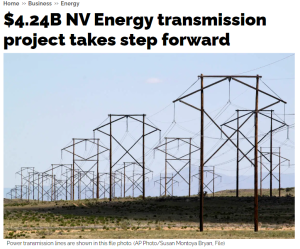
Infrastructure Required for EV Charging
EV Charging Stations The adoption of electric vehicles (EVs) is projected to surge, as this graph from Goldman Sachs (where billionaires get their financial information) indicates.
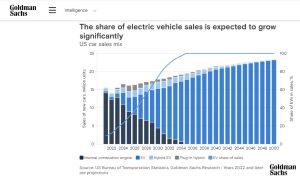
By 2030, an estimated 33 million battery-electric vehicles will require approximately 28.5 million EV chargers and supporting infrastructure. Installing high-speed EV chargers necessitates upgrades to local grid infrastructure, such as transformers, distribution lines, and substations.
The US government handed out $7.5 billion in grants to install EV chargers in a few states. The result? Seven. That’s right, seven total EV chargers. We’re screwed.
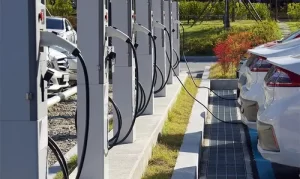
With more EVs on the road, peak electricity demand is expected to rise, especially during evening hours when drivers return home to charge their vehicles. Without effective management, this increased demand will put an enormous strain on our antiquated electrical grid.
To accommodate this growth, utility companies must introduce additional charges on electricity bills to fund necessary infrastructure upgrades. Ultimately, any rate increases passed on by utilities will impact consumers directly.
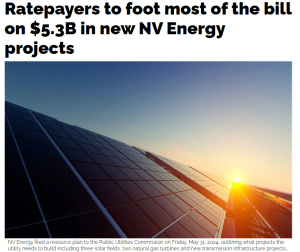
Going solar isn’t about saving money. It’s not about the return on investment of your solar energy system. Going solar is about protecting yourself and your family from energy costs so exorbitant they could make a living in your current home unaffordable.
Low utility costs were one of the reasons I moved my family to Las Vegas in 1999. However, during the 20 years we lived here, my electric bills more than tripled. When I sold my house in 2019, my summer electric bills were over $600 a month, making it difficult to justify staying in the home.
Now, I live in a small townhome in the Inspirada community. Initially, my average electric bill was $110 a month. With a solar energy system and net metering grandfathered in for 20 years, my monthly solar loan payment is also $110. This means I no longer worry about rising energy costs. I plan to pay off the solar loan within the next two years, after which my only energy expense will be the $38 NV Energy connection charge.
If I could have fixed my electricity costs in 1999 for the next 20 years, I would have saved tens of thousands of dollars and might still be in that home.
The urgency of transitioning to solar energy is undeniable. Current electric rates are set to surge significantly, doubling and redoubling over the next decade to cover NV Energy’s upcoming expenses. This increase is driven by unprecedented inflation, government policies like the Inflation Reduction Act and the Paris Climate Accord, and the massive infrastructure investments required for AI data centers and EV charging stations. Going solar is a powerful strategy to combat these rising costs. With solar, homeowners can fix their energy expenses for the long term, save money, and protect themselves from relentless rate hikes. Historical trends show that electricity prices have consistently doubled every 15 years, making now the ideal time to invest in solar and avoid skyrocketing future costs. Additionally, leveraging solar energy shields homeowners from inflation and the unpredictable volatility of the energy market. I can’t emphasize enough the critical need to act promptly and the significant financial benefits of switching to solar energy before net metering incentives diminish.
Leave a Reply
You must be logged in to post a comment.
